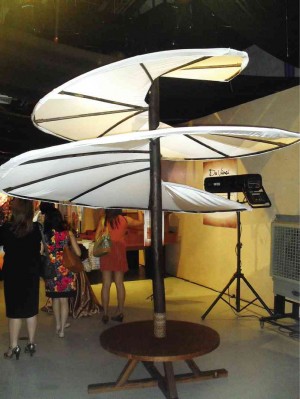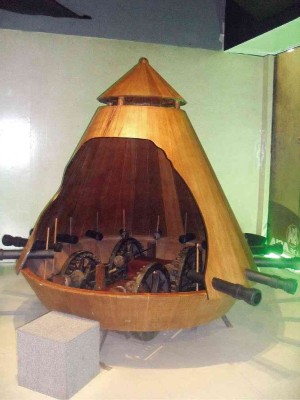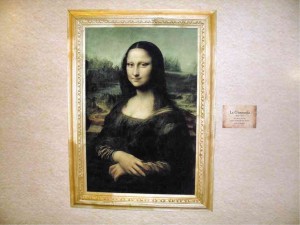Students and researchers trying to learn more about Leonardo da Vinci need not fret if they cannot afford to fly to Europe to see and study his famous inventions and paintings.
Da Vinci’s Workshop, an exhibit of some of the creations of the Italian Renaissance man, opened its doors recently to give the public a “rare opportunity to experience firsthand the incredible works of Da Vinci.”
Located at the south side entertainment mall of SM Mall of Asia in Pasay City, the exhibit was organized and brought to the Philippines by SM Family Entertainment Inc. (Feci) and Aurea International Exhibits (AIE) of Argentina.
“Leonardo da Vinci … is actually much more than the artistic genius behind the prominent paintings in the Louvre Museum,” says Arturo Carballo Jr., Feci senior operations manager.
“He was a prodigy. He was multifaceted. He was extremely skilled and talented in both sciences and the arts,” he adds.
Da Vinci is considered one of the most prolific inventors in history. Modern science adopted much from his three-dimensional artworks that used several scientific and mathematical applications.
Because of his curiosity and innovative thinking, he conceptualized machines that were considered advanced during his time.
The moving exhibit features 66 replicas and prototypes of Da Vinci’s inventions, as well as some of his notable paintings such as “The Mona Lisa” and “The Last Supper.”
The exhibit is ongoing in Manila until January next year and then will be brought to different parts of the country.
“We are proud to bring it (the exhibit) here,” says Ezequiel
Peña, AIE head. “I think it’s an opportunity for Filipinos to see and discover the greatest mind in humanity.”
He adds, “In the Philippines, as in my country, Argentina, rarely can you see an exhibition like this one.”
The exhibit is unique because of the interactive feature of each display. Except for the paintings, each wooden contraption can be touched, moved and operated by visitors.
Peña says, initially, Da Vinci exhibitions are mostly “static.” Most displays are “for your eyes only,” but people also want interaction to fully understand how a certain thing functions, he says.
“Everything in this exhibition works. All the inventions move. You can actually see how they work,” Peña says.
One of the items on display, a differential gear cart, looks like the archetype of modern cars. When the crank handle is turned, a gear attached to one wheel meshes with a gear in the
other wheel and turns it. The movement is transmitted to a single wheel that makes the remaining free wheels turn at their own speeds as the cart moves.
An aerial screw, similar to a child’s toy pinwheel, can be turned to replicate the upward spiral movement of the wind. Blades along the axle that are covered with lightweight fabric create a force against the air and lift the device off the ground. The invention reportedly paved the way for the development of the mechanics of modern helicopters.
Another interesting machine in the exhibit is the anemoscope, a simple device that indicates the wind’s direction.
Da Vinci often dreamed of flying and this was one of the tools he made to help make his dream come true.
Although not a flying machine, the device ushered in the modern weather vane.
Peña hopes that the ongoing exhibit will “inspire a kid to do something different in his life.”
“We want this to be enjoyed by as many families and kids,” Carballo says. “When we see families smiling as they leave this place … that’s when we can finally say ‘mission accomplished.’”
Entrance fee to Da Vinci’s Workshop is P200. Visitors of the exhibit can stay for as long as they like. Exhibit hours are the same as mall hours, from 10 a.m. to 9 p.m.




